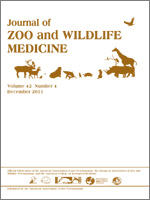The use of 0.025 ± 0.012 mg/kg (median ± interquartile range) thiafentanil with 0.15 ± 0.03 mg/kg xylazine (TX) and 0.011 ± 0.0015 mg/kg carfentanil with 0.25 ± 0.093 mg/kg xylazine (CX), with dosages based on estimated bodyweight, was used in the anesthesia of 37 Tibetan yak (Bos grunniens) housed within a drive-through animal park setting. The median time to lateral recumbency was 5 and 7 min for each group, respectively. With the addition of propofol in 8 CX animals and 17 TX animals, the anesthetic plane was suitable for a wide range of procedures. The median time to standing recovery following administration of naltrexone was 4 ± 3.5 min with TX and 7 ± 1.5 min with CX. There was one fatality and one case of renarcotization in the TX group. Overall, the dosages used in the study provided a reliable and useful anesthetic induction protocol, with TX animals demonstrating a more rapid induction and recovery with less cardiac depression than CX animals.
How to translate text using browser tools
1 December 2011
Anesthesia of Tibetan Yak (Bos grunniens) Using Thiafentanil - Xylazine and Carfentanil - Xylazine
Andrew Cushing,
Modesto McClean,
Michael Stanford,
Tessa Lohe,
Benjamin E. Alcantar,
Andrea Denise Chirife
ACCESS THE FULL ARTICLE
Anesthesia
Bos grunniens
carfentanil
renarcotization
thiafentanil
Yak





